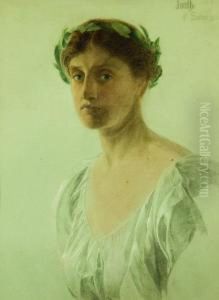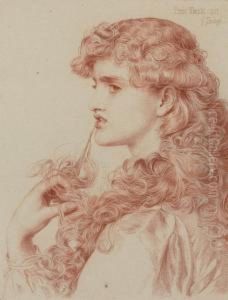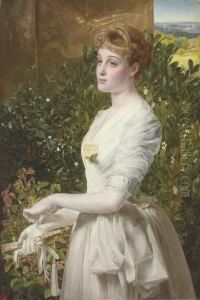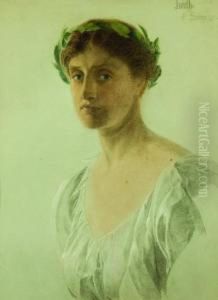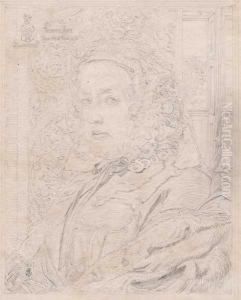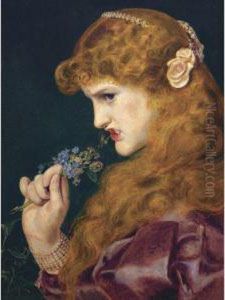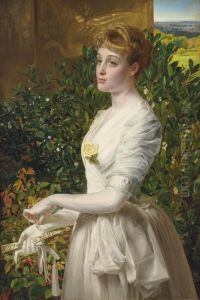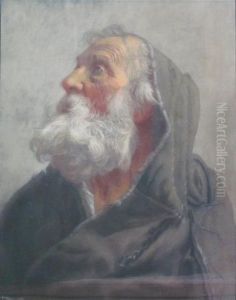Frederick Sandys Paintings
Frederick Sandys, born in 1829 in Norwich, England, was a distinguished painter and illustrator associated with the Pre-Raphaelite Brotherhood, a group of English painters, poets, and critics, founded in 1848. Despite not being an official member, Sandys' work was heavily influenced by the Brotherhood's ideals, including an emphasis on meticulous detail, vibrant colors, and themes from mythology, literature, and religion.
Sandys developed his artistic skills early, influenced by his father, Anthony Sands, a minor painter. He changed his surname to Sandys as an adult, marking his individual identity in the arts. During the 1850s, he became acquainted with Dante Gabriel Rossetti and other Pre-Raphaelites, and their influence profoundly impacted his style. His works are notable for their intense detail, rich coloration, and often somber themes.
Throughout his career, Sandys was particularly acclaimed for his exquisite drawings and paintings of women, characterized by their haunting beauty and intricate detail. His piece 'Medea' (1868) is a prime example, showcasing his skill in portraying compelling narratives through art. He also excelled in woodcuts and illustrations, contributing to notable periodicals of the time, such as Once a Week and The Cornhill Magazine.
Despite his association with the Pre-Raphaelites, Sandys maintained a distinct style, combining meticulous realism with a unique flair for drama and intensity. His interest in medieval and early Renaissance art influenced his technique and subjects, often imbued with a sense of melancholy and introspection.
Sandys' personal life was as complex and intriguing as his art. He had a tumultuous relationship with the actress Mary Emma Jones, who was the model for many of his most famous works. Financial difficulties and personal controversies occasionally overshadowed his artistic achievements, but his work continued to garner acclaim.
By the time of his death in 1904, Frederick Sandys had established a legacy as one of the most talented and distinctive artists of the Victorian era. His contributions to the Pre-Raphaelite movement and British art remain significant, celebrated for their technical prowess and emotional depth.

